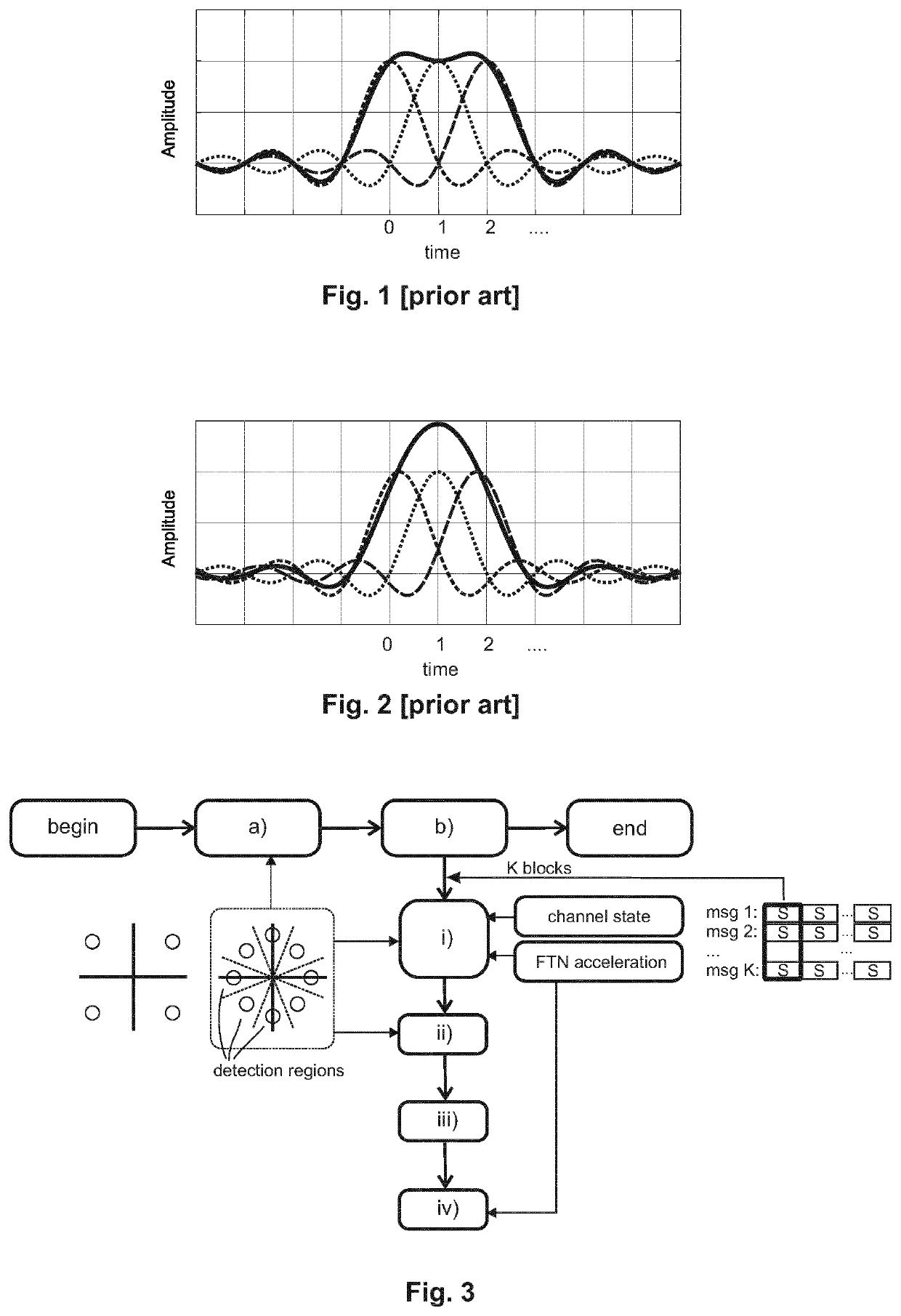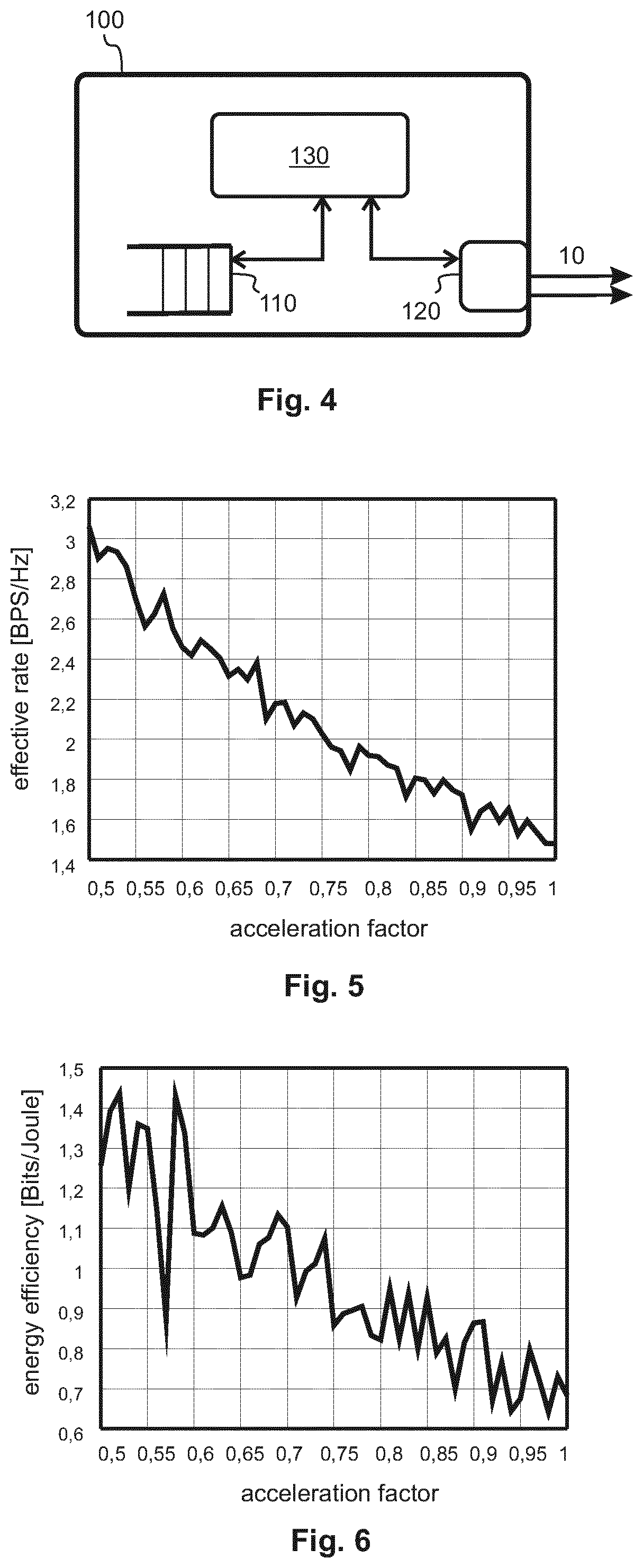Spatio-temporal precoding for faster-than-Nyquist signal transmissions
a technology of spatial time and transmission, applied in the field of digital communication, can solve the problems of channel introducing inter-user interference on transmitted signals, introducing inter-symbolic interference, etc., and achieve the effect of gaining in terms of effective rate and energy efficiency
- Summary
- Abstract
- Description
- Claims
- Application Information
AI Technical Summary
Benefits of technology
Problems solved by technology
Method used
Image
Examples
Embodiment Construction
[0040]This section describes the invention in further detail based on preferred embodiments and on the figures. It should be noted that features described for a specific embodiment described herein may be combined with the features of other embodiments unless the contrary is explicitly mentioned.
[0041]FIGS. 1 and 2 recall the effect of Nyquist's condition or upper limit on the signaling rate on intersymbol interference. In the example of FIG. 1, sin c-shaped signal pulses are consecutively transmitted on a data communication channel at a rate which is equal to Nyquist's signaling condition. It is considered that during each integer transmission slot (0, 1, 2, . . . ), one signal pulse is transmitted. Each of the depicted three dashed pulses has a non-zero amplitude at only one integer slot along the time axis, while at all other integer times, the pulses have zero amplitude. The depicted pulses have non-zero amplitude at times 0, 1 and 2 respectively. Specifically, the first pulse h...
PUM
 Login to View More
Login to View More Abstract
Description
Claims
Application Information
 Login to View More
Login to View More - R&D
- Intellectual Property
- Life Sciences
- Materials
- Tech Scout
- Unparalleled Data Quality
- Higher Quality Content
- 60% Fewer Hallucinations
Browse by: Latest US Patents, China's latest patents, Technical Efficacy Thesaurus, Application Domain, Technology Topic, Popular Technical Reports.
© 2025 PatSnap. All rights reserved.Legal|Privacy policy|Modern Slavery Act Transparency Statement|Sitemap|About US| Contact US: help@patsnap.com


